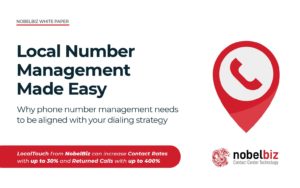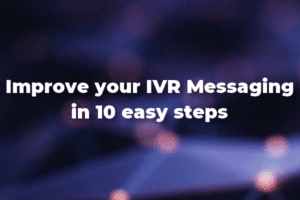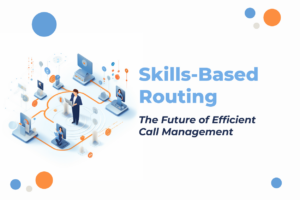Call flows play a vital role in seamlessly directing customer calls to the right place within your organization. They act as pathways that guide calls from the very beginning to a successful resolution, ensuring a seamless and efficient customer experience. Effective call flow management has the potential to revolutionize customer service, sales, and overall business operations.
Call flows are essential for contact centers as they provide a structured framework for managing customer interactions. By defining clear steps from greeting to issue resolution, call flows ensure consistency, efficiency, and a positive customer experience. Agents can navigate conversations effectively, address issues systematically, and deliver high-quality service, ultimately enhancing customer satisfaction and loyalty.
Understanding Call Flows
A call flow is like a roadmap that guides a phone call through a contact center. It ensures calls are directed to the right destination within your organization. IVRs are the initial point of interaction, presenting options to the caller for a personalized experience. The system determines the appropriate team or department based on the caller’s choice. Routing directs the call to the relevant destination. Queue management includes hold music or comfort messages. The call flow connects the caller to an agent with the necessary skills. Implementing best practices and different call flow types can enhance customer experience and operational efficiency.
Let’s have a quick look at some of the benefits of using call flows:
- Consistency: Ensures uniformity in customer interactions.
- Efficiency: Streamlines the handling of inquiries and issue resolution.
- Positive Experience: Enhances customer satisfaction through structured communication.
- Training: Facilitates easier training of new agents with a standardized approach.
- Issue Resolution: Guides agents in a systematic manner to address and resolve problems.
- Quality Assurance: Enables monitoring and improvement of service quality.
- Time Management: Optimizes agent time by providing a clear path for each call.
- Adaptability: Can be adjusted to accommodate varying call volumes and scenarios.
- Data Collection: Facilitates the collection of valuable customer data for analytics and improvement.
Key Steps in a Call Flow
Understanding the essential steps of a call flow is crucial for contact centers to ensure a streamlined and efficient customer experience. This knowledge enables agents to handle inquiries consistently, resolve issues promptly, and maintain a high standard of service throughout the communication process. Let’s continue with the 6 essential steps of a standard call flow.
- Initiation: A call flow activates when a customer calls your designated number. This can be a local, non-geographic, or custom vanity number.
- Interactive Voice Response (IVR): The IVR system presents options to the caller, who can then make a selection using the keypad or voice commands. Intelligent IVRs can interpret voice inputs, offering a more personalized experience.
- Caller Input: The caller’s choice leads to a more specific set of options or directly to the appropriate team or department.
- Routing: The system then routes the call based on the selected option. This could lead to an individual, a department, a waiting queue, or a custom group.
- Queue Management: If the recipient is unavailable, the call may be placed in a queue, where hold music or comfort messages are played to reassure the caller.
- Connection to Agent: Finally, the call is connected to a suitable agent, who can view detailed information about the caller if integrated with a CRM or CTI system.
Best Practices for Designing Call Flows
Before we dive deep into the best practices, let’s look first at what can make call flows fail. Call flows can fail if they are overly rigid and don’t account for the dynamic nature of customer interactions. Overly complex or confusing scripts can hinder natural communication, leading to customer frustration. Also, inadequate training on the call flow system may result in agents deviating from the intended process. Lack of regular updates to accommodate evolving customer needs and issues can also contribute to the failure of call flows in delivering a seamless customer experience.
Now, when it comes to designing call flows, there are several best practices that can greatly enhance the customer experience and improve operational efficiency. By implementing these practices, businesses can ensure that their call flow system is optimized for success. Let’s take a closer look at each of these practices:
1. Simplicity is Key
One of the most important aspects of a well-designed call flow is simplicity. Ensuring that the IVR menu is straightforward and concise is key to preventing frustration for callers. Overly complicated menus can lead to confusion and may even result in callers hanging up before reaching their desired destination. By keeping the IVR menu simple and easy to navigate, businesses can provide a positive experience right from the start.
2. Efficiency Focus
Minimizing the steps required for a caller to reach their desired outcome is essential for a smooth and efficient call flow process. Analyzing and streamlining the call flow regularly can help identify any unnecessary steps or bottlenecks that may be causing delays or frustration for callers. By continuously optimizing the call flow process, businesses can ensure that callers are able to reach their destination quickly and efficiently.
If you’re navigating call center management challenges, our article, ‘How to Manage a Call Center Efficiently,’ offers insights from top leaders. Covering efficient people management, innovative approaches, and organizational readiness, it’s a must-read for optimizing your call center.
3. Use of Comfort Messages
Implementing comfort messages during hold times can greatly improve the overall customer experience, especially during high call volumes. Hold music or comfort messages can help reassure callers that their call is important and that they will be assisted as soon as possible. These messages can also provide useful information or updates to keep callers informed and engaged during their wait.
4. Virtual Number Utilization
Employing virtual phone numbers can provide memorable customer experiences and efficient call routing. Virtual numbers can be easily customized to fit a business’s branding and can even be used to create vanity numbers that are easy for customers to remember. By utilizing virtual numbers, businesses can enhance their professional image and ensure that calls are routed to the appropriate destination with ease.
If you’re aiming to boost contact rates by up to 30% and increase returned calls by up to 400%, explore our whitepaper, ‘Local Number Management Made Easy.’ Learn the crucial role of aligning phone number management with your contact center’s dialing strategy for optimal results.
5. Prioritize Escalation
It is important to always offer an option for callers to speak directly with a human, especially in sensitive contexts like support services for the elderly. While IVRs and automated systems can provide a lot of value, there are times when customers may require the assistance of a live agent. By prioritizing escalation options, businesses can ensure that callers are able to reach a human agent when needed, providing them with the personalized support they may require.
If you want to learn more about how to optimize your IVR system, we encourage you to read this article next: 10 Tactics To Improve CX Through Contact Center IVR Messaging.
6. Scalability
Designing the IVR to handle peak call volumes without service degradation is essential for maintaining a high level of customer satisfaction. Implementing multi-level auto attendants can help distribute calls evenly among agents, preventing any one agent from being overwhelmed or underutilized. By ensuring that the call flow system can handle high call volumes, businesses can provide a seamless experience for callers, regardless of the time or day.
7. Manage Hold Times
Providing estimated wait times and offering callback options can help maintain customer satisfaction during periods of high call volumes. Waiting on hold can be frustrating for callers, especially if they are unsure of how long they will have to wait. By providing estimated wait times, businesses can set expectations and help manage customer frustrations. Offering callback options allows callers to request a call back when an agent becomes available, reducing their wait time and improving overall satisfaction.
To improve your hold times, implement intelligent call routing, leverage self-service options, and continuously analyze call patterns to streamline operations. Prioritize agent training to handle inquiries efficiently, ensuring a seamless customer experience during wait times. – Christian Montes, Executive Vice President of Client Operations @NobelBiz
8. Regular Updates
Keeping the IVR updated with current information about a business, including any changes in services or operating hours, is crucial for providing accurate and up-to-date information to callers. Outdated information can lead to confusion and frustration, so it is important to regularly review and update the IVR system to ensure that it reflects the most current information.
9. Continuous Testing
Regularly testing the call flow system is essential for identifying and correcting any inefficiencies or outdated information. By conducting regular tests, businesses can ensure that the call flow is functioning as intended and that callers are being directed to the correct destinations. Testing can help identify any potential issues or bottlenecks and allow for necessary adjustments to be made to improve the overall call flow process.
By following these best practices, businesses can design call flows that provide a seamless and personalized customer experience while improving operational efficiency. Implementing a well-designed call flow system is critical for long-term business success, as it helps build customer satisfaction and loyalty. With simplicity, efficiency, and technology at the forefront, businesses can create call flows that meet the needs of both customers and the business itself.
Types of Call Flows
Familiarity with various call flows is essential for a contact center’s success. Why? Because it ensures efficient operations, enhances the customer experience, and allows adaptability to changing situations. Understanding different call flows aids in resource management, optimizing performance, and ensuring compliance with regulations. This knowledge is vital for delivering exceptional service and maintaining operational excellence. Here are the most popular call flow types:
Linear Call Flow
This type of call flow is the simplest form, directly connecting callers to available agents or voicemail. It is ideal for businesses that have a small number of agents or a straightforward call routing process. When a call comes in, it is immediately directed to an available agent or to voicemail if no agents are available at that time.
Time-Based Call Flow
This call flow is based on the time of day or week. It allows businesses to route calls differently depending on the time of day or specific days of the week. For example, during business hours, calls can be routed to the main reception or a specific department, while after-hours calls can be directed to voicemail or an on-call agent.
Direct Extension Call Flow
With this call flow, callers have the option to directly reach a specific person or department by entering their extension number. This type of call flow is commonly used in organizations where callers may have a direct point of contact or need to reach a specific department without going through an IVR system.
Skill-Based Call Flow
Skill-based call flow routes calls to agents based on their specific skill sets. This type of call flow is particularly beneficial for businesses that have specialized teams or agents with different expertise. By matching callers with agents who are best equipped to handle their inquiries or issues, skill-based call flows can significantly improve customer satisfaction and first-call resolution rates.
If you’re eager to elevate your call center’s efficiency, explore our insightful article on skill-based routing: Mastering Skills-Based Routing: The Future of Efficient Call Management. Learn how this strategy transforms customer interactions, ensuring personalized service and boosting agent productivity. Dive into the world of skills-based routing and redefine your call center success!
Round-Robin Call Flow
In a round-robin call flow, calls are distributed evenly among agents to balance the workload. This type of call flow ensures that each agent receives an equal number of calls, preventing any one agent from being overwhelmed or underutilized. Round-robin call flows are commonly used in contact centers with a large number of agents and a high call volume.
Auto Attendant Call Flow
Auto attendant call flows route calls based on options selected by the caller. This type of call flow uses an IVR system to present callers with a menu of options, which they can select using their keypad or voice commands. Based on the caller’s selection, the call is then routed to the appropriate department or team. Auto attendant call flows provide a personalized and efficient customer experience, allowing callers to quickly reach the right destination.
Call Flows with NobelBiz
NobelBiz offers two powerful solutions to streamline and enhance call flows within contact centers. The NobelBiz OMNI+ Cloud Contact Center Software presents a comprehensive toolbox with limitless channel integrations, easy CRM incorporation, and a worry-free compliance toolset. Its dynamic business router and intuitive agent dashboard ensure seamless call routing and efficient management, making it a go-to solution for organizing contact center operations swiftly.
Complementing this, the NobelBiz Voice Carrier Network stands out as a top VoIP Interconnected Provider. With advanced smart routing, toll-free number provisioning, and outstanding network reliability, it ensures uninterrupted uptime and exceptional call quality. Together, these NobelBiz products empower contact centers to achieve organized, efficient, and high-quality call flows.
Conclusion
Mastering call flows involves simplicity, efficiency, and technology. By following best practices and understanding call flow types, businesses can enhance customer experience and operational efficiency. Implementing a well-designed call flow system is critical for long-term business success.
Call flows create a seamless and personalized experience for customers. Prioritizing simplicity ensures easy navigation through IVR menus. Efficiency is key in minimizing steps for callers to reach their destination, saving time and improving operational efficiency.
Technology, such as intelligent IVRs and integration with CRM or CTI systems, enhances the customer experience and enables efficient assistance. Implementing a well-designed call flow system benefits customers and businesses by building satisfaction and loyalty, improving operational efficiency.
In conclusion, mastering call flows requires simplicity, efficiency, and technology. By understanding call flow types and following best practices, businesses can create a seamless and personalized customer experience while improving efficiency. Implementing a well-designed call flow system is critical for long-term business success.
If you need help with setting up your own call flows, get in touch with one of our experts today.

Michael McGuire is a contact center industry expert with almost two decades of experience in the space. His experience includes roles as Director of Contact Center Digital Transformation at NobelBiz, and as Director of Operations at FLS Connect, managing multiple call centers. As President of Anomaly Squared and Targeted Metrics, Michael successfully transitioned companies into remote operations and significantly boosted revenues. With a strong background in customer service, leadership, strategic planning, and operations management, Michael excels in driving growth and innovation in the call center space.
Mike is also a proud Board Member for R.E.A.C.H Trade Group, promoting consumer protection and satisfaction and Co-host of the Off Skripted Podcast – a show about Life, Call Centers and everything in between.











